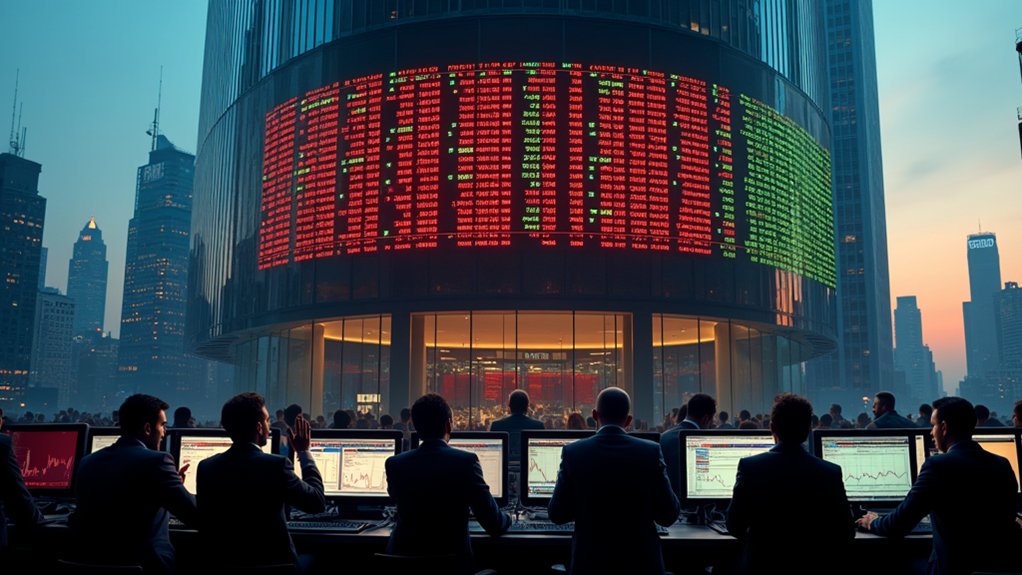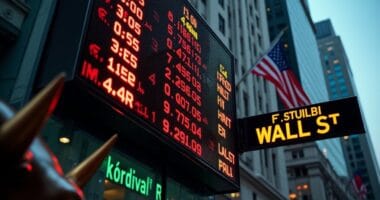President Trump’s trade tariffs sent Wall Street into a frenzy, triggering the S&P 500’s dramatic 10.5% nosedive over two days. Trading desks embraced the chaos, capitalizing on wild price swings while safe-haven assets lost their status. The market mayhem coincided with Trump declaring a “Liberation Day” for American trade, even as projected business profits faced a 55% plummet by 2026. The real story lies in how traders turned pandemonium into profit.

A wave of market mayhem swept through Wall Street as Trump’s tariff announcements sent stocks into a nosedive.
The S&P 500 plunged 10.5% in just two days, while the Dow Jones and Nasdaq got hammered with their biggest single-day losses since the pandemic.
So much for stability.
Trading desks couldn’t catch their breath as wild price swings became the new normal.
Trump declared these broad import measures represented Liberation Day for American trade.
Volatility spiked to levels not seen since the early COVID days, and suddenly everyone was scrambling.
The usual market patterns? Out the window.
Even the mighty U.S. dollar lost its safe-haven status, tumbling as uncertainty gripped the markets.
Wall Street’s projected profits took a beating too – we’re talking a 55% nosedive by 2026.
Companies started playing hot potato with tariff costs, trying to pass them onto consumers.
When that didn’t work, their profit margins got squeezed like a lemon in a juice bar.
Some businesses even flirted with the dark side, exploring black market options to dodge the tariffs entirely.
The White House tried to frame these tariffs as some kind of negotiating superpower, but the markets weren’t buying it.
Every policy announcement sent traders into a frenzy, making corporate earnings reports look like yesterday’s news.
The index’s market capitalization weighting meant larger companies had an outsized impact on these dramatic market swings.
Bond yields bounced around like a ping-pong ball, and traditional safe-haven assets couldn’t decide which way was up.
The real kicker? A hasty “90-day pause” announcement after markets threw their tantrum.
Classic damage control.
Meanwhile, inflation expectations shot through the roof, consumer purchasing power took a hit, and export industries braced for retaliatory measures.
Trading desks, at least, found a silver lining – nothing like chaos to create some profitable opportunities.
The 404 error page on ABC News became the most visited link as investors desperately searched for market updates.
The Federal Reserve watched from the sidelines, probably wondering how to handle this mess.
Between unpredictable policy moves and market meltdowns, they had their hands full.
As one analyst put it off the record: “It’s like watching a chess game where someone keeps changing the rules mid-move.”





